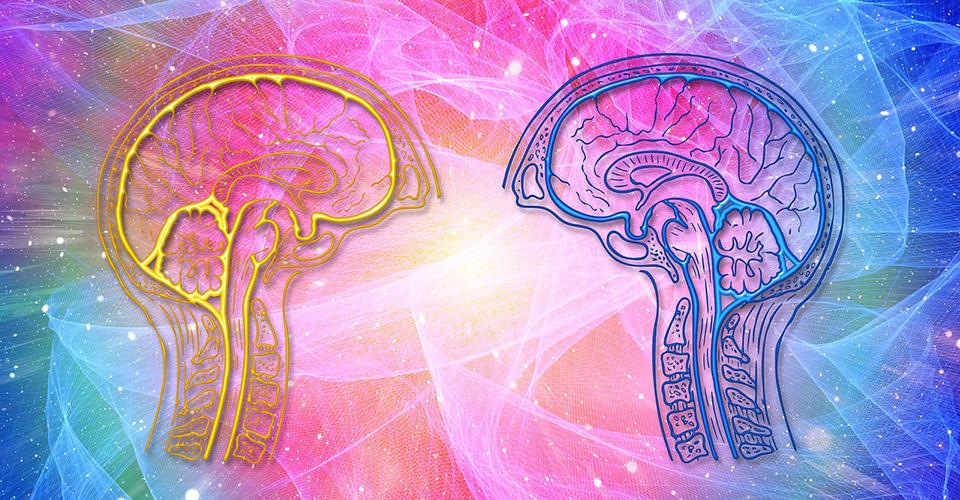
John Kibe Munyoro, Sayani Mukherjee & Marko Susimetsä
The cognitive conception of man has a long history. Certain signs of it can be seen in the writings of the 17th century thinker Descartes, but the conception reached its true potential only with the introduction of cognitive psychology. Unlike the behaviourist conception of man and learning theory that had ruled the early 20th century thinking, cognitivists argued that mental processes cannot be disregarded when we observe human or animal behaviour (Susimetsä, 2006). The cognitive conception of man focuses on humans as thinking beings who analyse situations, interpret, retrospect and make decisions (Susimetsä, 2018). This conception of man is also often said to speak of human beings as information processors. In this regard Mayer (1996) argues that cognitivists see human mind as a kind of a computer and that they have both input and output functions as well as processing memory (i.e. RAM) and long-term memory (i.e. hard drive). In short, the input from the environment is processed in the working memory which draws resources from the long-term memory, containing previous knowledge, in order to produce output (Mayer, 1996).
The term cognition refers to perceiving and knowing, and cognitive scientists seek to understand mental processes such as perceiving, thinking, remembering, understanding, language development and learning (e.g. Stillings, Weisler, Chase, Feinstein, Garfield, & Rissland, 1995). Modern cognitive science studies the nature of the mind by drawing from research in several areas, including psychology, neuroscience, artificial intelligence, computer science, linguistics, philosophy and biology. Green and Vervaeke (1996) note that originally cognitivists regarded their conceptual models as approximations of cognitive activities, but more recently many cognitivists have become eliminative materialists, likening cognitive factors in the reality of yesteryear. In their view, people do not act on beliefs, goals, aspirations and expectations. Rather, activation of their environment makes them do things. In a critique of the eliminative branch of thought, Greenwood (1992) notes that cognitions are contently psychological factors that are logically independent of the explanatory propositions for which they figure.
Cognitive factors do quite well in accounting for variance in human behaviour and guiding successful interventions. To make their way successfully through a complex world, people have to make sound judgments about their capabilities, anticipate the probable outcomes of different events and actions, ascertain socio-structural opportunities and constraints and regulate their behaviour accordingly. These belief systems represent a working model of the world that enables people to achieve desired results and avoid untoward ones. (Green & Vervaeke, 1996.) Mercer (2013) argues that social brain is very useful since it aids in understanding the dynamic of social exposure, iterative relationships between individuals involved in and making vital collective thinking.
Reflection and forethought are, therefore, essential for survival and progress. Agentic factors that are explanatory, predictive and of demonstrated functional value may be translatable, refinable and modelled in another theoretical language but not eliminable (Rottschaefer, 1985; 1991). The cognitive conception of man (CCM) has three main principles: self-monitoring of one’s behaviour, its determinants and its effects (Bandura, 1991). They are essential in deciding one’s behaviour based on personal standards and environment, in addition to effective self-reaction that forms the critical part of the CCM. In the following, we will delve deeper into the history of the cognitive conception of man and pick up central ideas from the cognitive learning theory and reflect on its impact and importance to modern education.
History of the Cognitive Conception of Man
The cognitive conception of man emerged in the 1950’s as a response to behaviourism. The cognitivists argued that behaviourists ignored the aspect of cognition in their analysis of human behaviour (Susimetsä, 2018). For example, Chomsky (1959) argued that language cannot be purely built up based on behaviouristic conditioning and it must be influenced by mental processes.
A definite pioneer of the cognitivist school of thought was Piaget (1896–1980) who focussed on the study of early childhood development. His theory is a kind of a continuation of the earlier biological conception of man in the way he connects the growth and development of child with the development of their mental capabilities. That is, the development of the body and brain are biologically determined and proceed through certain stages which result in increasing cognitive abilities. Piaget and cognitivists in general see humans as inquisitive, curious beings who attempt to make sense of their environment. They analyse their environment, make predictions and try to adjust their behaviour accordingly.
However, it should be noted that while cognitivists believe that learning is more complex than the behaviourist idea of learned reactions to stimuli coming from the environment, they do not refute behaviourism completely (Susimetsä, 2018). The cognitive conception of man still sees people as beings who react to stimuli, but they add a layer of cognitive information processing, such as conscious judgement of outcomes on basis of their own previous experiences, or outcomes that they have seen or heard others experiencing, which affect the response that the individual chooses to apply when encountering environmental stimuli. Kohlberg and Mayer (1972) argue that cognitive conceptions act as a progressive process that is driven by cognitive development to initiate a conducive interaction in enabling an adequate basis for child development. It should also be noted that Piaget disagreed with the idea that intelligence was a fixed trait and regarded cognitive development as a process which occurs due to biological maturation and interaction with the environment.
The Four Stages of Cognitive Development
According to Piaget’s famous theory (Piaget & Inhelder, 1977), children undergo four stages of development that improve their ability to acquire and understand knowledge and interact with the world. During their daily interaction with the world, children gain new knowledge, build up existing knowledge, and adjust previous ideas into new information.
The first stage is the sensorimotor stage and it concerns the first two years of a child’s development (0–2 years old). At this stage children develop their sense of space and their sensory (tasting, hearing, seeing etc.) schemata begin to gradually develop. They also learn symbolism and language in their games and grasp the idea of object permanence (objects still exist even when they are out of sight).
The second stage is the preoperational stage, concerning two to six or seven (2–6/7) year-olds. This stage can be further divided into preconceptual and intuitive phase. The preconceptual phase is characterised by magical and egocentric thinking and very literal interpretations of language. The intuitive phase includes the development of sense of time. At this stage children think symbolically, learn using words and pictures and are very active and curious of their environment.
The third Stage is the concrete operational stage (7–11-year-olds). At this stage, children learn to understand concrete concepts, time and distance as well as norms and morals. Their ability to think logically develops and they can use inductive logic.
The fourth stage is the formal operational stage (12–16-year-olds). The development stage is characterised by the development of abstract and theoretical thinking, and the ability to solve hypothetical problems. Children at this stage begin to think morally, philosophically, ethically, socially and politically.
After the fourth stage, Piaget’s theory considers that the individual has reached an adult level of development. However, it should be noted that later research of brain development has shown that the brain continues developing at least until the age of 25. It has been argued that logical and rational thinking mature only during this phase and that younger individuals are more likely to understate risks and act based on their emotions. (C.f. Arain et al., 2013; Tanner & Arnett, 2009)
Making Sense of the World
In addition to the development stages, other important concepts in the cognitive conception of man are schema, accommodation and assimilation. Wadsworth (1989, 10) states that schemata “are the cognitive or mental structures by which individuals intellectually adapt to and organise the environment”. Assimilation refers to the process in which new information is added to an existing schema and accommodation refers to the formation of new schemata or the changing of old ones.
A more in-depth look at the above concepts is required. As said, a schema is a cognitive framework that helps organize, understand and interpret information. Through the construction of schemata, people can build understanding of their environment. According to Piaget (Piaget & Inhelder, 1977), a schema is both a category of knowledge as well as the process of acquiring that knowledge. A very early schema for a baby might be “cry and I will get food”. Another often-quoted example is of a child who begins to learn information about a specific type of animal, such as a horse. They build a schema for this animal, including information about the number of their legs, their habitat, the sounds they emit, their diet etc. This addition of new information into a developing schema is the process of assimilation.
At first a schema can be very open and unfocussed. As such, a child may over-extend the schema and call another similar animal, such as a cow, with the same name. Or they may call all their care-takers “mom” instead of recognising that one of them should be called “dad”. However, when the child is told that there is a fault in their schema, they begin to accommodate: form new schemas and change their existing ones. Thus, the schema for a horse is redefined to not include animals that belong into a new schema: a cow.
Piaget was mainly concerned with the early development of human beings, but later researchers expanded his thinking to learning in general (e.g. Anderson, Reynolds, Schallert, & Goatz, 1977; Rumelhart, 1982). As human beings encounter new things and interpret their experiences, they make both small and large adjustments to their existing ideas about the world around them. Adult human beings make sense of the world by applying what they already know. It involves fitting reality and what they experience into their current cognitive structure. A human being’s understanding of how the world works, therefore, filters and influences how they interpret the reality. An adult schema might concern a visit to a grocery store: how and where to find certain products, how to collect them, where to take them, how to pay for them. The schema might include sub-schemas differentiating between specific grocery stores. When visiting a completely new grocery store, for example in another country, a person may need to accommodate their existing schemata to a lesser or larger degree.
Cognitive Conception of Man in Education
Piaget’s work focussed on human development rather than learning, but, in addition to above-described schema theory, the area of cognitive theory has produced concepts and ideas that are more useful from the point of view of education in general. Perhaps the most important one is the concept of constructivism. Although modern conception of constructivism is not restricted to the cognitivist conception – rather, other conceptions of man, such as socio-culturalism, have a very different approach to constructivism – Piaget and his theory of knowledge construction through schemata forms an important facet of it. In essence, constructivism posits that knowledge is constructed by the learners and it is not received passively from an outside source. In addition, constructivism is based on the idea that all people have pre-existing knowledge and ideas (i.e. schemata) that affect the way they interpret new information and how they process this information to form new knowledge or to transform old knowledge (i.e. assimilation and accommodation).
The cognitive conception of man is directly related to the cognitive learning theory and this area of research has produced many concepts that are in active use in the education field. One of these is the so-called intrinsic motivation. Whereas the earlier behaviouristic conception of man had seen human beings as reactive animals and motivation for behaviour mostly came from without (extrinsic motivation: pleasure rather than pain, treats, praise, good grades), Piaget’s point of view of a human being as a curious, logical creature brought around the idea that also the motivation to engage in a specific activity might come from within. This idea was soon picked up by other researchers who began to focus on intrinsic motivation (wanting to be good at something for its own sake, wanting to know more about something).
However, the discussion of simple intrinsic and extrinsic motivation soon moved to another level: the goal theory. In his meta-analysis of previous research, Conti (2001, p. 144) found that a learner with a clear, set goal generally performs better than a learner without such a goal, or a vague goal. Pintrich (1999) showed the importance of learner’s cognitive processing and self-regulation, especially in that highly self-regulated learners were more committed to their learning.
Ames (1992) divides academic goals into two main categories: 1) mastery goal (I want to be good at this) and, 2) performance goal (I want people to see me as good at this). Archer (1994) added a third goal, academic alienation, which describes a learner who is not interested in anything else but passing the courses. Archer (2001) notes that learners with a mastery goal will use deeper study methods (see below) and see difficulties as a natural part of learning, while learners with a performance goal will use surface learning strategies (see below) and may be discouraged if they encounter setbacks.
Another concept produced by cognitivist school is the categorisation of learning strategies into cognitive and metacognitive strategies. Weinstein and Mayer (1986, p. 315) define cognitive strategies as “behaviours and thoughts that learners engage in during learning and that are intended to influence the learner’s encoding process”. These include 1) rehearsal, or repetition, strategies including rote learning, recitation, self-questioning, 2) elaboration strategies, that attempt to combine new knowledge with previous knowledge, through expanding upon a topic, or using new words or vocabulary in practice. Prokop (1989) offers an alternative categorisation of cognitive surface and deep-level strategies. Surface level strategies include repetition and note-taking, while deep-level strategies include activities such as summarising, deduction and recombination.
Metacognitive strategies, on the other hand, refer to higher level cognitive thinking and knowledge. Flavell (1979; 1987) divided metacognition into knowledge of cognition and regulation of cognition. Knowledge of cognition refers to an individual’s knowledge and control of their cognitive processes, including knowledge about learning strategies, their attention span and memory capabilities as well as knowledge and understanding of when and how to use different learning strategies. Baker (1989) notes that adults usually have better knowledge of their own cognition and can describe it better than children. Regulation of cognition is the other aspect of metacognitive strategies and it includes all processes that a person uses to control his/her cognitive activities – that is, planning, monitoring and evaluation (Flavell, 1979; 1987). An individual with good regulation skills can plan their learning strategies, monitor their understanding and learning and evaluate their success – and change or adjust their use of cognitive learning strategies if necessary.
Overall, the cognitivist conception of learning is very individual-centric and many of the theories give a very small role to emotions, social interaction and feedback in their models. As Mayer (1996) pointed out, the focus is on how an individual processes incoming information and produces an output relevant to the current needs. That is, the human mind is seen as a kind of a computer. However, despite these arguable weaknesses, the goal-orientation theory and the consideration of cognitive and metacognitive learning strategies are highly relevant in modern discussion of learning. Likewise, Piaget’s work and later research on brain maturation and cognition is important in teaching us how to approach and what to expect from learners in different development phases.
Practical Considerations of Cognitive Conception of Man
The cognitive conception of man views the maturation of mind and its cognitive abilities as central factors when considering learning. The cognitivist ideal is a person with strong self-regulatory skills who can set short and long-term goals for themselves and then work meticulously to reach those goals (Susimetsä, 2018).
A teacher relying on this philosophy and relevant theories could take, for example, Piaget’s theory of developmental phases and use it to prepare his or her teaching material so that it applies to the age of the students. With the age of the student permitting, they would also teach them to use and apply various cognitive learning strategies, such as repetition, reorganising, summarisation, memorisation etc. They would also remind the students of the superiority of deep-learning strategies, such as questioning, and pay attention to enhancing their self-regulation skills. Additionally, the teacher would try to engage the students’ interest in a way that supports them in developing intrinsic motivation towards the content to be learned. This might be done through practical examples of the usefulness of the new skills and knowledge.
In addition, a teacher approaching teaching from this perspective would try to recognise the previous level of skills and knowledge that the students have in a particular area. Personalised study/development plans might be used to provide the students with specific goals. Then, they would provide them with materials and education that will cause the students to revisit their pre-existing schemata and construct new knowledge structures or adapt their existing knowledge according to the new evidence. Through the use of cognitive learning strategies, the student can assimilate information, process, analyse, store facts and feelings that aid in creating mental pictures, reading words, and understanding various situations that they are exposed to. This process is best supported with problem-based learning or inquiry-based learning where the students can digest new information and skills and apply them to solve realistic or real problems. However, many teachers will rely on more traditional lectures and various resources exist on how to improve lectures on basis of cognitive research (e.g. Sandhu, Afifi, & Amara, 2012).
Overall, the cognitive conception of man and the cognitive learning theory are widely used in modern education and they are often seen as the “go to” approach by teachers new to the profession. After all, those are the kinds of methods most of them experienced as students in their youth. However, the cognitive learning theory can be criticised for its reliance on student’s self-regulation skills and learning abilities and for the fact that it largely ignores the social and cultural aspects of learning. Competing conceptions of man and learning theories – such as the sociocultural approach and humanism – have risen to address these defects.
Authors
COO, MSc. John Kibe Munyoro recently finished his teacher studies at Häme University of Applied Sciences. He is a co-founder of the TaksiSuomi Oy since January, 2019, and has previously worked in Capacity Building Expatriate at the HARD-South Sudan 2008-2011, Extension Coordination at the Baraka Agricultural College 2006–2008, Kenya. His interests include logistic internalization, interpersonal competence and education philosophy.
Sayani Mukherjee recently finished her teacher studies at Häme University of Applied Sciences. She has a Tech degree in electronics and communication and Dual Bachelors in Physics and Instrumentation engineering, as well as over four years experience in teaching.
Principal Lecturer, PhD Marko Susimetsä has worked at HAMK Häme University of Applied Sciences since 2006. His work includes development projects and teacher education. His interests include intercultural competence, education philosophy and history of education.
References
Ames, C. (1992). Classrooms: Goals, structures, and student motivation. Journal of Educational Psychology, 84, 261–271.
Anderson, R. C., Reynolds, R. E., Schallert D. L., & Goatz, E. T. (1977). Frameworks for Comprehending Discourse. American Educational Research Journal 14(4), 367–381.
Arain, M., Hague, M., Jonal, L., Mathur, P., Nel, W., Rais, A., Sandhu, R., & Sharma, S. (2013). Maturation of the adolescent brain. Neuropsychiatric Disease Treatment 2013, 9, 449–461.
Archer, J. (1994). Achievement goals as a measure of motivation in university students. Contemporary Educational Psychology 19, 430–446.
Archer, J. (2001). From motivation to self-regulation: Clustering students’ motivational and cognitive characteristics, and exploring the impact of social interaction on learning. In F. Salili, C. Y. Chiu, & Y. Y. Hong (Eds.), Multiple Competencies and Self-Regulated Learning: Implications for Multicultural Education (pp. 95–122). New York: Kluwer Academic/Plenum.
Baker, L. (1989). Metacognition, comprehension monitoring, and the adult reader. Educational Psychology Review 1, 3–38.
Bandura, A. (1991). Social Cognitive of Self-regulation. Organizational behaviour and human decision processes 50(2), 248–287.
Bandura, A. (1999). A social cognitive theory of personality. In L. Pervin & O. John (Ed.), Handbook of personality (2nd ed.) (pp. 154–196). New York: Guilford Publications.
Bandura, A. (2001). Social cognitive theory: An agentic perspective. Annual review of psychology 52(1), 1–26.
Conti, R. (2001). The influence of early reflection and goal orientation on adjustment during the first semester. In F. Salili, C. Y. Chiu, & Y. Y. Hong (Eds.), Student Motivation: the Culture and Context of Learning, (pp. 205–214). New York: Kluwer Academic/Plenum.
Flavell, J. H. (1979). Metacognition and cognitive monitoring: A new area of cognitive-developmental inquiry. American Psychologist 34, 906–911.
Flavell, J. H. (1987). Speculations about the nature and development of metacognition. In F. E. Weinert & R. H. Kluwe (Eds.), Metacognition, Motivation and Understanding, (pp. 21–29). New Jersey: Lawrence Erlbaum.
Green, C. D., & Vervaeke, J. (1996). What kind of explanation, if any, is a connectionist net? In C. W. Tolman, F. Cherry, R. van Hezewijk, & I. Lubek (Eds.), Problems of theoretical psychology, (pp. 201–208). North York, ON: Captus.
Greenwood, J. D. (1992). Against eliminative materialism: From folk psychology to Völkerpsychologie. Philosophical Psychology 5, 349–367.
Kohlberg, L., & Mayer, R. (1972). Development as the main aim of education. Harvard educational review 42(4), 449–496.
Mayer, R. (1996). Learners as information processors: legacies and limitations of educational psychology’s second metaphor. Educational Psychologist 31(3), 151–161.
Mercer, N. (2013). The social brain, language, and goal-directed collective thinking: A social conception and its implications for understanding how we think, teach, and learn. Educational Psychologist 48(3), 148–168.
Piaget, J. & Inhelder, B. (1977). Lapsen psykologia [The Psychology of the Child]. Jyväskylä: Gummerus.
Pintrich, P. R. (1999). Motivational beliefs as resources for and constraints on conceptual change. In W. Schnotz, S. Vosniadou & M. Carretero (Eds.), New Perspectives on Conceptual Change, (pp. 33–50). Amsterdam: Pergamon.
Prokop, M. (1989). Learning Strategies for Second Language Users. Wales, UK: EdwinMellen.
Rottschaefer, W. A. (1985). Evading conceptual self-annihilation: Some implications of Albert Bandura’s theory of the self-system for the status of psychology. New Ideas Psychology 2, 223–230.
Rottschaefer, W. A. (1991). Some philosophical implications of Bandura’s social cognitive theory of human agency. The American Psychologist 46, 153–155.
Rumelhart, D. E. (1982). Schemata: The building blocks of cognition. In J. Guthrie (Ed.), Comprehension and teaching: Research reviews, (pp. 3–26). Newark, DE: International Reading Association.
Sandhu, S., Afifi, T.O., & Amara, F. M. (2012). Theories and Practical Steps for Delivering Effective Lectures. Journal of Community Medicine & Health Education 2(158). doi: 10.4172/2161-0711.1000158
Stillings, N. A., Weisler, S. E., Chase, C. H., Feinstein, M. H., Garfield, J. L., & Rissland, E. L. (1995). Cognitive science: An introduction (2nd ed.). Cambridge, MA: MIT Press.
Susimetsä, M. (2006). Motivated and Self-Regulated Learning of Adult Learners in a Collective Online Environment. Doctoral Thesis. Acta Universitatis Tamperensis 1160. Juvenes Print. Retrieved June 5, 2019 from https://tampub.uta.fi/bitstream/handle/10024/67619/951-44-6667-5.pdf
Susimetsä, M. (2018). Teacher’s Philosophical Thinking as a Basis for Pedagogical Choices. In M. Susimetsä & H. Ainjärv (Eds.), Theory and Practice in Driver Education, (pp. 13–51). Tallinn: TLU Press.
Tanner, J.L. & Arnett, J.J. (2009). The emergence of ’emerging adulthood’ – The new life stage between adolescence and young adulthood. In Furlong, A (Ed.), Handbook of Youth and Young Adulthood, pp. 39–45. London: Routledge.
Wadsworth, B. J. (1989). Piaget’s Theory of Cognitive and Affective Development (4th ed.). New York: Longman.
Weinstein, C. E. & Mayer, R. E. (1986). The teaching of learning strategies. In M. C.Wittrock (Ed.), Handbook of Research on Teaching, (pp. 315–327). New York: Macmillan.





